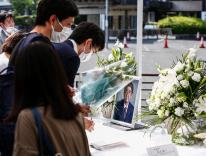A SIMPLISTIC NON-SOLUTION
Zeead Yaghi’s article (“The Toll of Sectarian Politics,” February) promotes the thesis that the devastating problems that beset Lebanon—devalued currency, a broken economy, political dysfunction—all find their source in its sectarian underpinnings. Since its foundation, Lebanon has functioned according to an arrangement that recognizes eighteen sects, i.e. five Islamic sects (Sunni, Shia, Druze, Alawite, and Ismaili); the Maronites and eleven other Christian sects; and the Jewish community. Political power is allocated in consideration of affiliation with these sects.
The author rightly places blame on the corruption of political officials who have functioned more in consideration of their personal or clan interests than the good of the Lebanese people. The problems of Lebanon might be resolvable—if their source stopped there.
No mention is made of the flood of immigrants in Lebanon. The United Nations Relief and Works Agency reports that over 479,000 refugees are in Lebanon. About 45 percent of them live in the country’s twelve refugee camps. The most recent war in Syria forced over 1.5 million refugees to flee to Lebanon. This immigration burden has been placed on the 4.7 million Lebanese citizens residing in the country.
The Covid pandemic afflicted Lebanon like it did the rest of the world. The other crises crippled Lebanon in its efforts to protect and serve its people.
Nor does the author note that superpowers and Lebanon’s neighbors in the Middle East have used Lebanon as their sandbox to carry out proxy politics and wars for decades.
The author seems to feel that the leadership of the Maronite Church can solve the problems, observing that it is one of the largest landowners in Lebanon. He fails to consider that the disposition of the property is not simply in the hands of the Maronite patriarch, just as the property of the Catholic Church in the United States could not be disposed of by the pope. (Be sure that if the Maronite Church did begin to sell its property, there are ready Sunni and Shiite buyers.)
Abandonment of a sectarian arrangement is a simplistic go-to solution for Western observers who are comfortable with secular governments. However, to ignore religious affiliation in Lebanon would be as difficult as ignoring race in the United States. The West might be comfortable viewing all Lebanese simply as Lebanese, but be sure that Saudi Arabia and Iran will view Lebanon as a nation of Sunni and Shia adherents, with a small, insignificant Christian minority.
Chorbishop John D. Faris
Saint Anthony Maronite Catholic Church
Glen Allen, Va.
THE COMMON MORTAL SINS
In his recent article (“How the Irish Changed Penance,” February), John Rodden explains that in the early Church notorious sins like murder, apostasy, and adultery were forgiven through the Order of Penitents, a rigorous and extended time of public penance and mortification. He also explains that what we call venial sins were forgiven by participating in the Eucharist, giving alms, and seeking forgiveness from those whom they had offended. But he does not deal directly with forgiveness of the other, more common transgressions that we are accustomed to call mortal (grave) sins. These would include such shortcomings as serious theft, harmful slander, vicious racism, and numerous sexual sins.
Years ago William J. Bausch explained in his book A New Look at the Sacraments how Christians who committed these other mortal (grave) but not notorious sins were forgiven. He states that concerning the Church in those early ages, “There is no suggestion that all we call grave sin excluded them from the Eucharist and required the use of the sacrament of penance…. This reference to grave sins may surprise us, but the indications are that those in what we call mortal sins approached the Eucharist for forgiveness.”
If Bausch is correct and if the Christians of those first centuries could receive forgiveness of grave sin by participating in the Eucharist for all but the most notorious sins, could not the same be our understanding and practice today? I would hope so.
James Doll
Columbus, N.C.
STILL ENCHANTED
I was quite impressed with James Kloppenberg’s brilliant summary of the important work of Hans Joas (“Signs of the Sacred,” February). For most of my academic teaching career, and now during my retirement years, I have consistently questioned the view that secularization will eventually obliterate any meaningful sense of the sacred. Yes, institutional religion is certainly on the decline, especially in Europe and America, but deeper down, in people of all persuasions, a sense of the more, the transcendent, the holy, and the sacred continues to exist. This becomes more evident when we follow the trail blazed by social philosophers and theologians who called for a shift of analytic focus from institutions as objects of study to the experiential life subjects, both in the center and on the fringes of formal religious involvement. I have found the theological and spiritual writings of Martin Buber, Teilhard de Chardin, Karl Rahner, and others particularly helpful, especially as they pointed to the deep experience of mutual love as a primary locus of the sacred.
David M. Thomas
Kalispell, Mont.
PURSUIT OF UNITY
I’d like to offer a word of appreciation for Gregory Hillis’s article (“Unity Without Reduction,” March). I am very grateful for the balanced view he provides. I have a range of emotions when it comes to traditionalists: from respect to fear to repulsion to appreciation, depending on the context of my interaction with them. But no matter the circumstances of a given moment, I continue to recognize that God is present and active in them. They are my Catholic brothers and sisters, and for my part I am determined to continue dialogue and the pursuit of unity with them. My understanding of Ignatian spirituality supports me in this. I’m relieved to know I am not alone.
Ann M. Cortez
Los Angeles, Calif.
Please email comments to [email protected] and join the conversation on our Facebook page.
Previous Story
Rome on Mission
Next Story
Poem | A Devotional Poem


